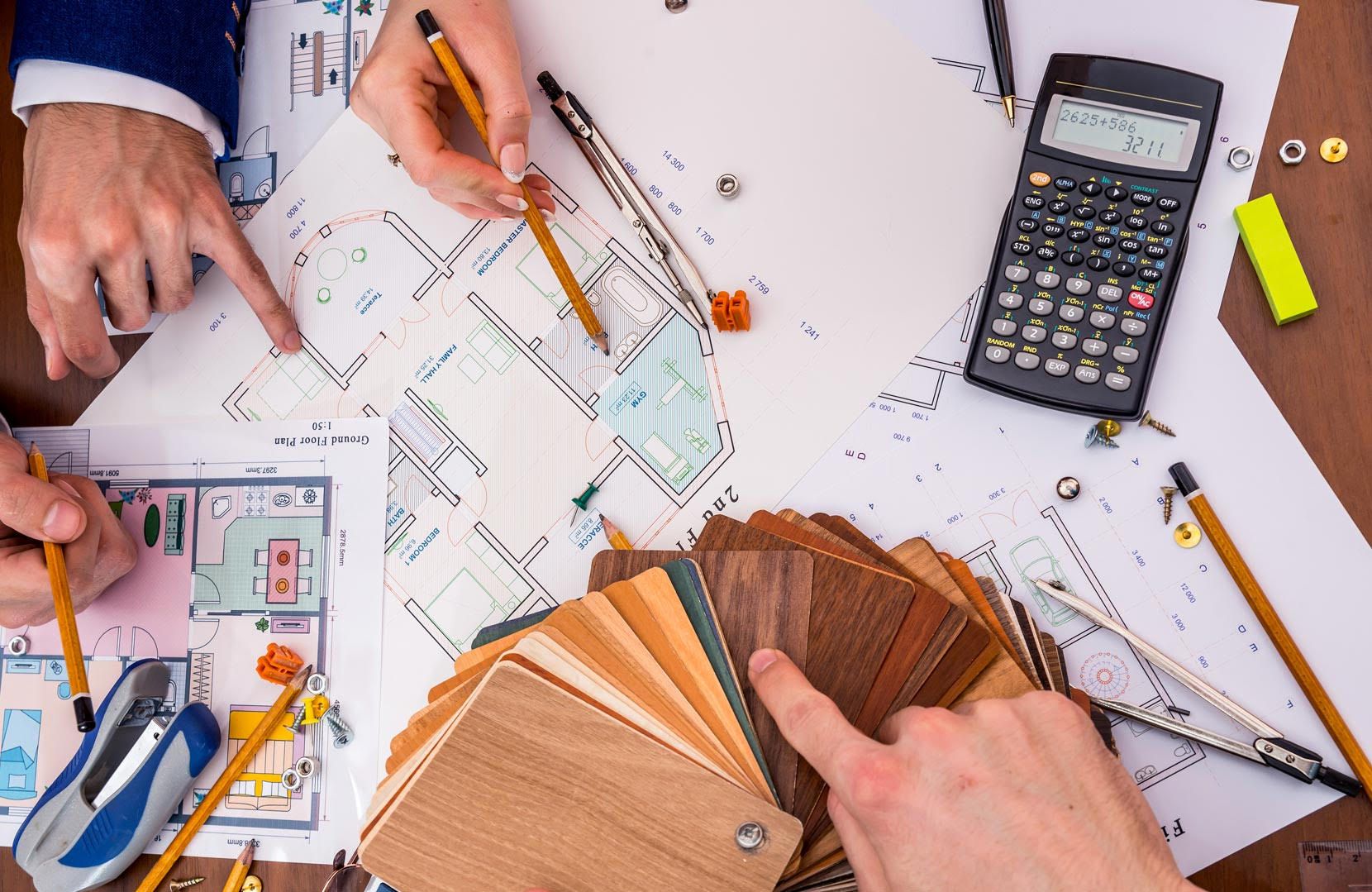I was going to quit drinking once until I found out I’d have to go to one more meeting every month.
We’ve told that joke in my family for more than 50 years, an homage to time spent sitting around talking instead of doing the thing being talked about.
For those of us with backgrounds in highly regulated industries, the thought of suffering through another meeting — or worse, a meeting about a meeting — is more than we can stand. However, if you’re building a new home or remodeling your current abode, the emotional aspect of improving the place where you live tends to make meetings more tolerable. Sure beats sitting around the conference table listening to the compliance officer’s monthly report.
A successful building or remodeling project involves the coordination of a number of folks to help narrow the design, clarify the work scope, and price the job accurately. Below are some of the pre-construction planning meetings that must take place before we start pounding nails.
Design meetings:
In my opinion, design meetings are the most fun. Expect some back-and-forth here as the architect or cabinet designer you are working with tries to interpret your wishes in a way that you love. It takes a bit of time, but ultimately you should land on something that excites you.
In another life, I was part of a group formed to design a new college baseball stadium. As the head baseball coach, I represented the end-user who worked together with the university’s development office and various layers of administration to build a ballpark on the eastern shores of Portland’s Willamette River.
Early in the pre-construction process, we met a half-dozen stadium architects, each of which had several major sports venues to their credit. Impressive, but a few steps beyond what we needed for a mid-major baseball program. The architect we chose returned a month later with four renderings. The first solved a parking problem long suffered by the university by building the field on the top of a new, multi-level parking structure.
Interesting.
The next two were simply different orientations of the same design, but at ground level and a bit closer to the river.
Okay.
They prefaced the last rendering by denying that they had a pot farm in their San Francisco offices. “When you said you were going to build a stadium on the river, we thought why not build a stadium … on the river?” An image flashed on the screen of our new ballpark built on a floating barge system that raised and lowered with the tides.
You guys are good.
In the end, the president killed our project because it cost too much, calling to mind the very reason design meetings are so dang much fun: there is nobody in the room who is going to tell you, “no.”
Reality sucks.
Site Visits:
Site visits refer to meetings that take place where the work will be done. In the case of an addition or remodel, this would be at your home. On the other hand, new home meetings take place on the lot or acreage on which you’ll be building.
The purpose of pre-construction site visits is to familiarize contractors with the challenges they will face in completing your project. This could be as simple as a plumber checking the crawl space to see if there is enough slope to move waste to the sewer line for your master bathroom addition. On the other hand, undeveloped land must be carefully evaluated to determine how basic services will be supplied to the house, like a roadway and power service that must cross a creek before getting to the homesite.
Ultimately, site visits help bring clarity to a project. Think of the contractor coordinating them for you as old Doc Harris, the general practitioner who brings in Dr. Jobe to perform Tommy John surgery, Dr. Oz to stent your heart, and Dr. Drew to fix your love life — dude, you’re a mess! Once all the experts understand the challenges at play, a plan of action can be formed.
Selection Meetings:
Like design meetings, it’s easy to get caught up in cool stuff you can put in your home. Did you know you can spend five large on a toilet that’ll send yesterday’s stroganoff to the same place as a $300 commode? From cabinets to appliances to plumbing and lighting fixtures, you can run the gamut. A good showroom consultant can help you stay within a budget, provided you are willing to do so. If you absolutely, positively must have a countertop that is so special it can only be cleaned with a kitten — a white kitten — well, expect your budget to get blown up. Your showroom consultant will be thrilled.
Cabinets:
Since cabinets tend to drive the design of kitchens and bathrooms, we suggest you start there. A good cabinet designer will help you layout the floor plan, show you all the features and options that they provide, and help you choose a door style and hardware to complement your tastes. Showrooms typically have attractive displays that your designer will use to gauge your preferences.
Be sure to take a color sample with you when you leave. You’ll use it to select countertops, flooring, and wall colors.
Appliances:
There is arguable no area of selection that can impact your kitchen budget more than appliances. You can choose a very nice stainless steel package for $9,000 or one with Wolf and Sub Zero badges that could run you as much as a new Range Rover. In any case, your cabinet designer will rely on the appliance spec sheets to size your cabinet openings properly.
Most appliance showrooms today are full of stainless steel that starts to look alike pretty quickly. When you fall in love with the ones that are wider than the others, have knurled handles, or red knobs, increase your budget; you’re in the expensive section.
Countertops:
With your cabinets and appliances decided, it’s time to move onto countertops. Most homeowners today want granite or quartz, although cost-saving options exist for less conspicuous areas, like the laundry room.
Commonly referred to as “slab,” granite and quartz materials are plentiful. Since quartz is man-made, it tends to be more consistent in pattern. Granite, on the other hand, has more natural veining that makes each slab unique. A good slab supplier will be happy to take you to the warehouse and pull slabs from storage so you can see them fully exposed. Use your cabinet sample to help you find something you like. A good supplier or fabricator will help you narrow down your choices.
Before you leave, be sure to take a slab sample with you. Keep it together with your cabinet sample. You will use them to select your backsplash and flooring? You sensing a theme here?
Tile:
Tile materials, combinations, and layouts are infinite. For this reason, we like to recommend you select you backsplashes and showers after cabinets and countertops. If you’ve been collecting samples at each stop, your showroom consultant will use them to find materials that compliment your cabinets and counters. He or she will also suggest a tile layout and any accents or highlight materials that will make your project unique.
Flooring:
Pre-construction meetings involving flooring will depend on your project and the type of flooring you’re interested in. If you are remodeling an existing bathroom or installing pre-finished hardwood in the hallway, you will probably meet at the flooring showroom. If you are adding sand-in-place hardwood to match an adjacent floor, you will want to have the installer on-site to evaluate the existing flooring and the scope of work involved for the most seamless installation.
Other Selections:
Some construction projects — new homes and major remodels, in particular — involve a great many other selections. From fireplaces and mantles to exterior siding and roofing materials to interior doors and trim moldings, the list is long. Each item can be seen in showrooms.
Patience, grasshopper.
The selection process is one that can test the endurance of an Italian peloton. Unless you know exactly what you want, even a kitchen cabinet meeting can easily take two hours or more. Most homeowners are shocked by the number of decisions they need to make. Frankly, it’s exhausting. Pace yourself and don’t try to make too many decisions in one day.
And finally, handoff meetings:
At Fazzolari, pre-construction services, like plans, engineering, and trade partner site visits, are coordinated for our clients by an internal project manager. We lean on our outside team of suppliers to host selection meetings in their respective showrooms while tracking all of the choices from our offices.
After a construction contract has been signed, project managers handoff the job to an experienced site supervisor who will become your on-site contact. Our site supervisors manage the construction schedule, receive deliveries, and oversee our trade partners. You’ll want to meet them cuz they’ll be handling the day-to-day. Plus, they’re a swell bunch of guys.


